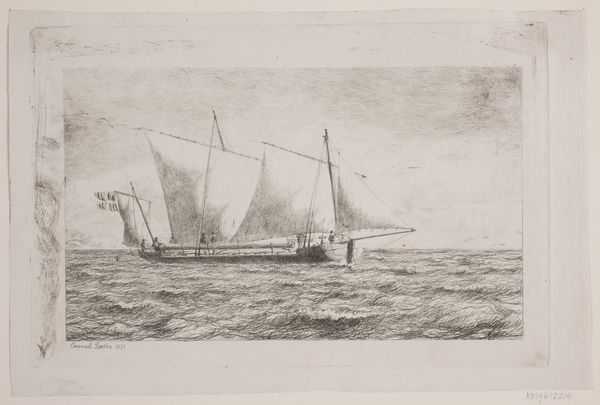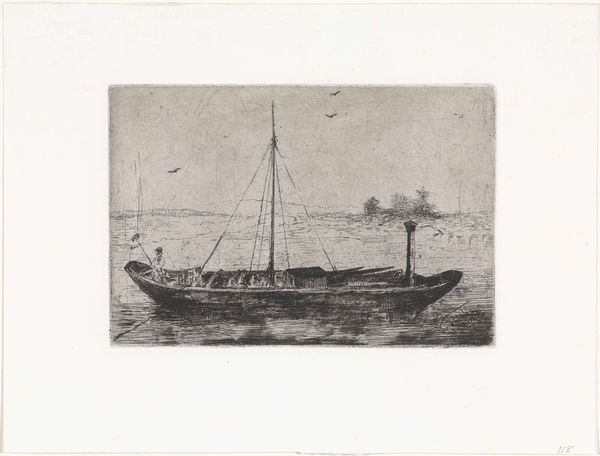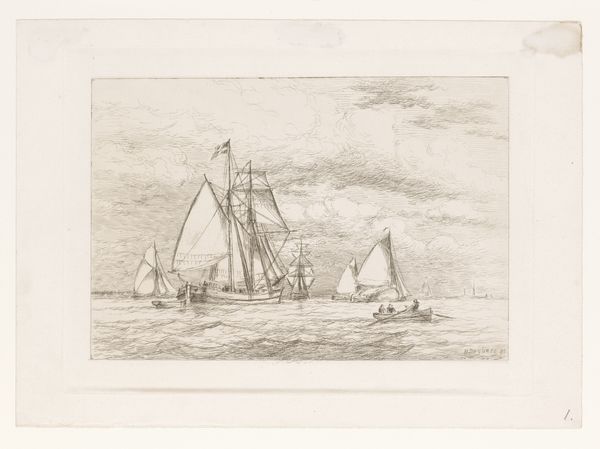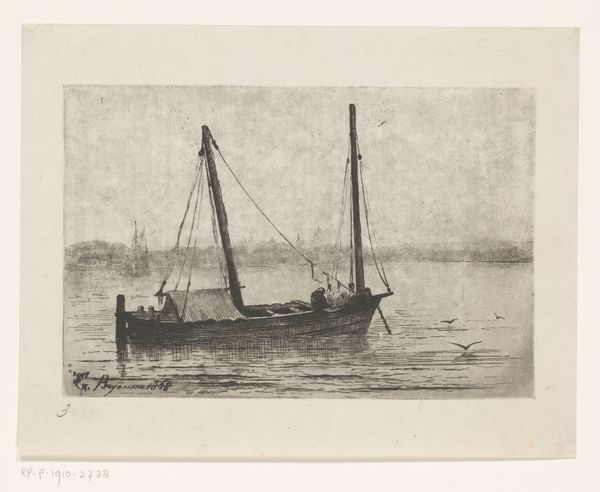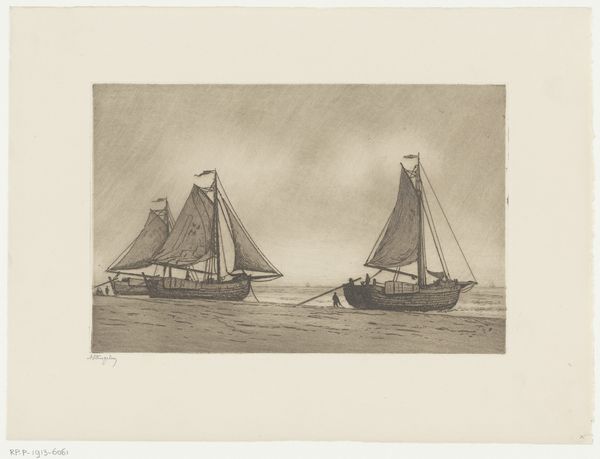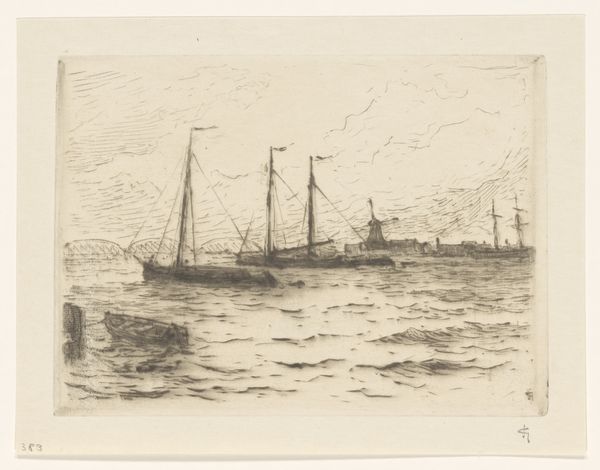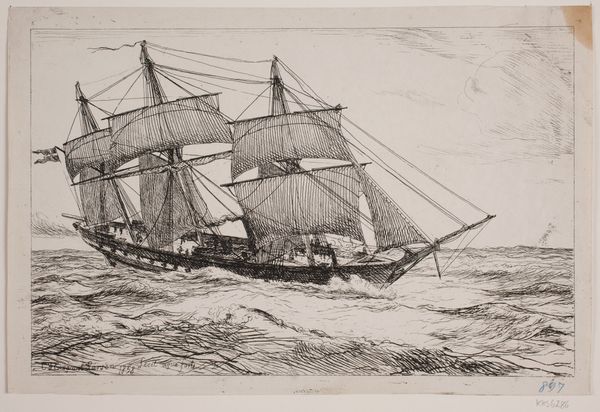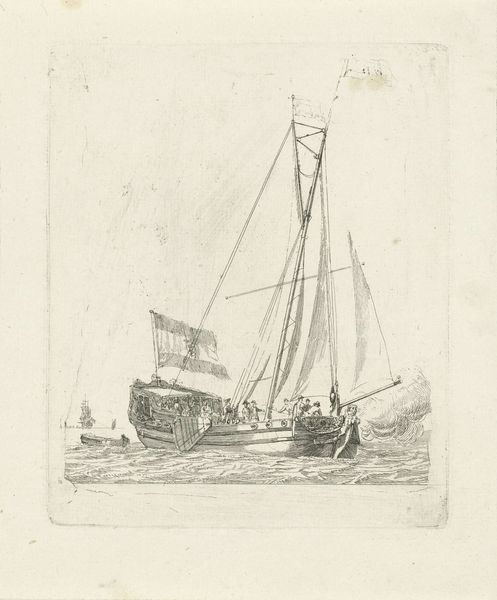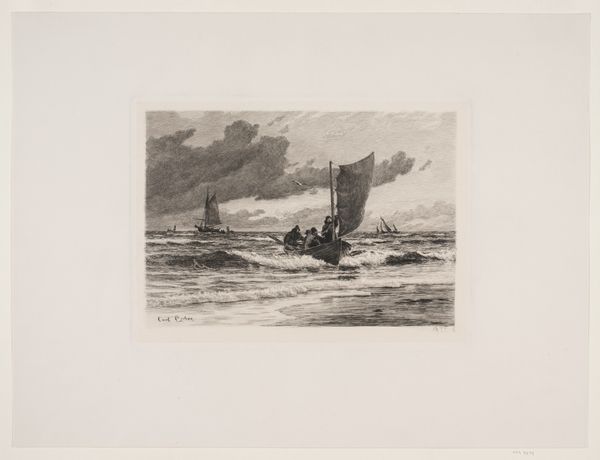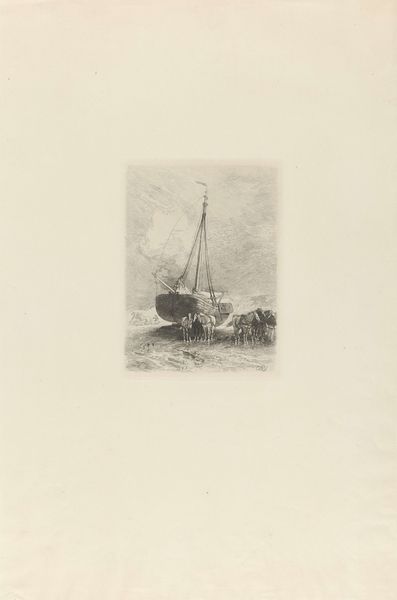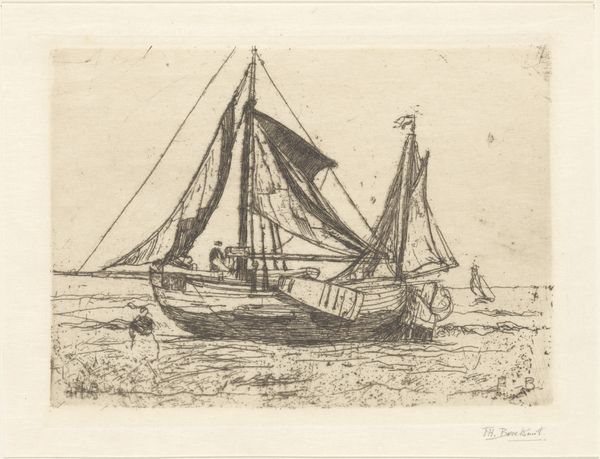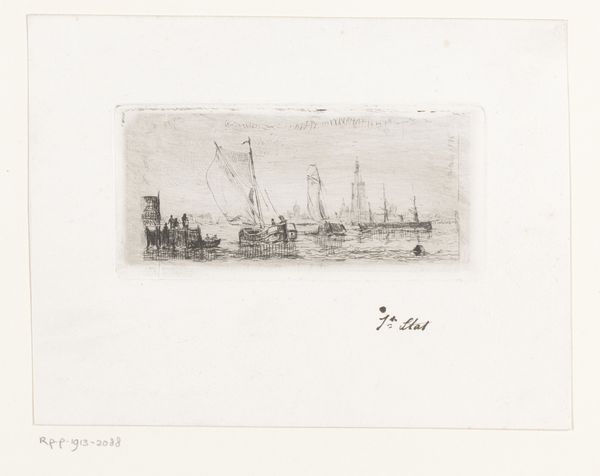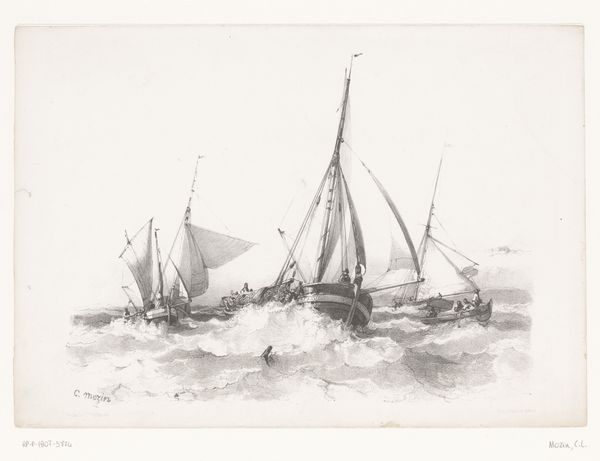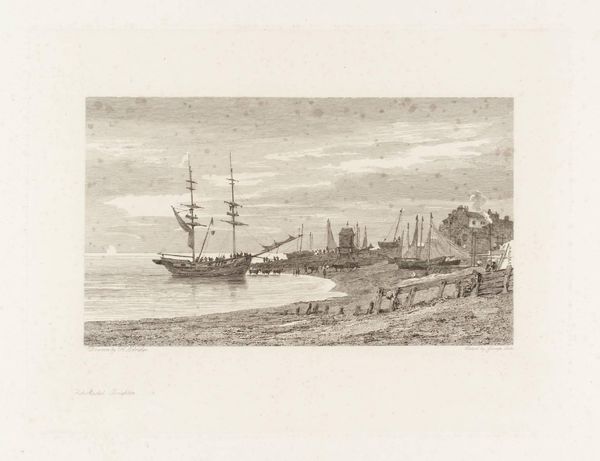
drawing, pencil
#
drawing
#
pencil sketch
#
landscape
#
etching
#
pencil drawing
#
pencil
#
water
#
watercolour illustration
#
modernism
Copyright: Public domain US
Editor: This is Arthur Lismer's "Hmcs Grilse on Convoy Duty," created in 1919 using pencil. It has this immediate feeling of quiet determination despite being a war scene. What's most striking to me is the loneliness of the ship amidst the vast expanse of the ocean. What draws your eye when you look at this drawing? Curator: That's a beautiful way to put it! You know, for me, the magic lies in how Lismer manages to capture the sheer volume of the ocean with just a few deft strokes of his pencil. I find myself wondering, what stories could this ship tell? It's almost like the vessel becomes a character, bearing silent witness to history unfolding. And did you notice the airplane almost hidden in the sky? Editor: I did see the plane! It felt a bit like an afterthought but maybe that suggests a shift in warfare or simply the technology of the era becoming more prevalent? Do you see the scene as hopeful or melancholic, considering it's just after the war ended? Curator: A wonderful question! To me, it's both. There’s definitely a somber tone; it speaks to loss. Yet, there's a forward momentum too, like the ship itself is charting a course into an uncertain future. Perhaps it represents the resilience of the human spirit? Also, think about Lismer's involvement with the Group of Seven; he often sought to capture the essence of Canada. Here, I wonder if he’s showing us a portrait of a nation forging ahead after a great trial? Editor: That's fascinating – I hadn't considered the national identity aspect so directly. So much is communicated here with such limited means. Curator: Exactly! Art isn't always about grand gestures. Sometimes, it’s the quiet observations, the subtle nuances that speak the loudest, isn't it? I might need to revisit my initial perceptions. Thanks for pointing that out!
Comments
No comments
Be the first to comment and join the conversation on the ultimate creative platform.
